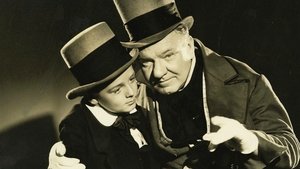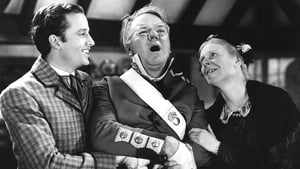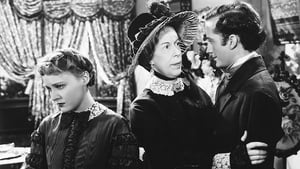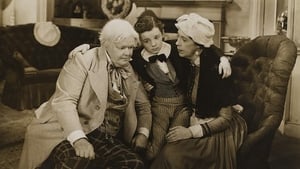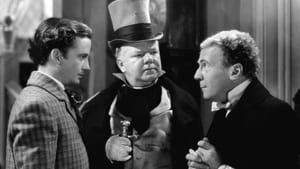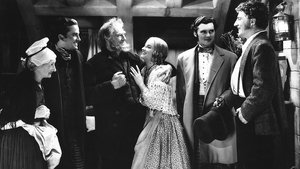Video Sources 0 Views
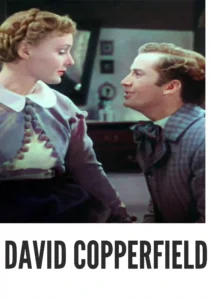
Synopsis
A Boy’s Journey Through Life: David Copperfield (1935) in Vivid Color

Delve into the heartwarming world of Charles Dickens with David Copperfield, a timeless classic from 1935, now exquisitely colorized for a viewing experience that resonates with modern audiences. This film, featuring Freddie Bartholomew as the young David, beautifully captures the trials and triumphs of a boy’s journey to manhood. Perfect for family viewing and classic film aficionados, this HD download brings a beloved literary masterpiece to life with stunning clarity and color.
David Copperfield Storyline: A Tale of Resilience and Growth
David Copperfield chronicles the life of David, from his innocent childhood to his eventual success as a writer. Born shortly after his father’s death, David’s early years are idyllic until his mother remarries the cruel Edward Murdstone. Subjected to harsh treatment, David is eventually sent away to work in a factory.Despite the hardships, David’s spirit remains unbroken. He finds solace and guidance from his eccentric aunt, Betsey Trotwood, and encounters a host of memorable characters, both kind and cruel. Through perseverance, David overcomes adversity, discovers his calling, and finds true love. The film beautifully portrays themes of resilience, the importance of kindness, and the power of self-discovery, making it a poignant and uplifting story for all ages. Ultimately, David Copperfield is a celebration of the human spirit and the enduring power of hope.
Movie Cast
The film boasts a stellar cast of actors who bring Dickens’ beloved characters to life:
- Freddie Bartholomew as Young David Copperfield
- Frankie Thomas as David Copperfield as a Boy
- W.C. Fields as Mr. Micawber
- Lionel Barrymore as Dan Peggotty
- Maureen O’Sullivan as Agnes Wickfield
Movie Genre
David Copperfield falls into the genre of sentimental family drama, with elements of coming-of-age and social commentary that are characteristic of Charles Dickens’ work. Its heartwarming story and memorable characters make it a timeless classic that resonates with audiences of all ages.
Historical Context: Dickens on the Silver Screen
Released in 1935, David Copperfield is one of the earliest and most celebrated adaptations of Charles Dickens’ novels. Produced during the Golden Age of Hollywood, the film reflects the era’s penchant for grand storytelling and memorable character portrayals. David Copperfield set a high standard for future Dickens adaptations and remains a testament to the enduring appeal of his literary masterpieces.
Colorization Details
This colorized version of David Copperfield has been meticulously restored using modern digital techniques, enhancing the visual appeal while preserving the film’s original charm and emotional depth. The colorization process involved carefully analyzing the grayscale tones of the original black and white footage and assigning appropriate colors to each scene. While the specific software used remains proprietary, the techniques employed included advanced algorithms for color palette selection and image enhancement. This painstaking process brings new life to the characters and settings, making the story even more engaging for modern audiences. While some may debate the merits of colorizing classic films, it introduces these films to a broader audience, ensuring their legacy for future generations.
Technical Details
- Director: George Cukor
- Screenplay: Hugh Walpole
- Based on: the novel by Charles Dickens
- Cinematography: Oliver T. Marsh
- Edited by: Robert J. Kern
- Production Company: Metro-Goldwyn-Mayer (MGM)
- Distributed by: Metro-Goldwyn-Mayer (MGM)
- Runtime: 130 minutes
Technical Specifications
- Download Format: MP4
- Resolution: HD (1080p)
- Compatibility: Compatible with most devices, including smartphones, tablets, computers, and smart TVs.
Reviews and Critical Reception
David Copperfield (1935) is widely regarded as one of the best adaptations of Charles Dickens’ work, praised for its faithful portrayal of the novel’s characters and themes. With a stellar cast and masterful direction by George Cukor, the film remains a beloved classic that continues to captivate audiences. As a timeless story of resilience and hope, David Copperfield offers a heartwarming and uplifting cinematic experience.
FAQs
- Q: What is David Copperfield about?
- A: David Copperfield is a coming-of-age story about a young man who overcomes adversity to find success and happiness.
- Q: Is David Copperfield (1935) a faithful adaptation of the novel?
- A: Yes, the film is widely regarded as a faithful and well-executed adaptation of Charles Dickens’ classic novel.
- Q: Is this version of David Copperfield colorized?
- A: Yes, this version has been professionally colorized to enhance the viewing experience.
- Q: What makes David Copperfield interesting for Dickens fans?
- A: David Copperfield offers a faithful and engaging cinematic adaptation of one of Charles Dickens’ most beloved novels.
- Q: What is the download format?
- A: The download format is MP4, which is compatible with most devices.
- Q: What resolution is the download?
- A: The resolution is HD (1080p), providing a high-quality viewing experience.
Download Now in HD!
Watch David Copperfield Today!
